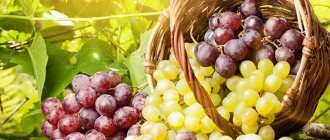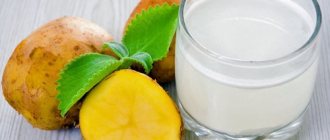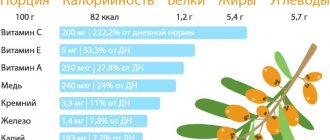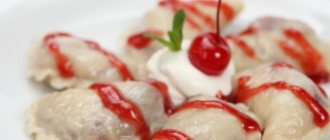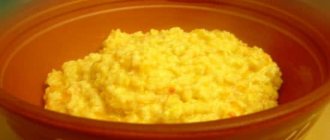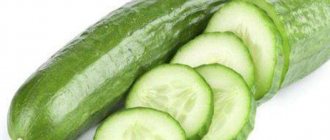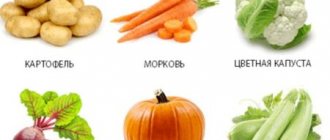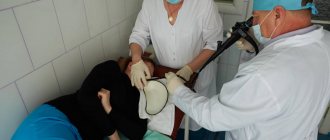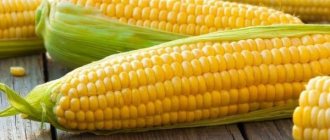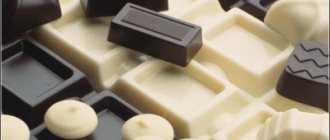The pancreas is a very capricious organ of the gastrointestinal tract. Having once become inflamed due to poor nutrition, it will take revenge with attacks of pain and nausea at the slightest provocation. Relapses can be reduced to nothing if you know exactly what you can eat during pancreatitis and what you will have to give up.
What can you eat if you have pancreatitis?
Before you study the list of products in detail, you need to firmly understand the basic principles of nutrition for an inflamed pancreas. First of all, you should not eat anything prepared by frying, drying or smoking. All products are boiled or stewed.
The freshness of the ingredients is also extremely important. Even approved products can cause irreparable harm if they are expired. Therefore, you should always check the shelf life on the packaging.
Diet No. 5 includes a fairly wide list of permitted foods. But there will be no room for salted nuts or chips. Spicy solid foods are prohibited. Therefore, men need to forget about beer with dried fish, and children – about fast food. And this is not a reason to be upset. On the contrary, this is an excuse to cleanse the body of toxins and start a healthy lifestyle.
| Allowed | Forbidden |
| Stale bread, a day old, oatmeal cookies, honey, crackers, marmalade, marshmallows | Fresh bread, muffins, puff pastries, pies and other baked goods |
| Soups made from vegetables, cereals and thin noodles | Steep broths with fatty meat and fish, borscht, okroshka |
| Meat that does not contain fat: chicken, veal, sea fish, rabbit, turkey | Fatty beef, pork, duck, dumplings, cod liver |
| Homemade cottage cheese, yogurt, goat milk | Sausages, frankfurters, sausages, smoked meats |
| Omelet from chicken eggs without yolk, quail eggs | Pickles, marinades, sauerkraut, peppers |
| Buckwheat, semolina, oat flakes, rice | Condensed milk, confectionery, jams, different types of ice cream |
| Zucchini, potatoes, sea cabbage, dill, beets | All legumes |
| Non-acidic fruits of fruit and berry plants, dried fruits; from nuts: almonds, hazelnuts, groundnuts (peanuts) | Spicy snacks, vegetables, sour fruits, including cherries |
| Lightly brewed warm tea, rosehip decoction, Borjomi, Essentuki-4, fresh homemade juices | Alcohol of any strength and sparkling water, steeply brewed tea, cocoa, coffee |
Fruit dessert recipes
In dietetics, there are many recipe options for preparing marmalade, while the use of gelatin allows you to obtain a denser and more stable marmalade mass, but with agar-agar you get a delicate and soft structure.
To prepare dessert for an inflamed pancreas, you should use only permitted fruits and berries of good freshness and ripeness, and do not forget that if diabetes is present, then you must use sweeteners or fructose instead of sugar. If you don’t mind the sourness of the dessert, then sugar can be completely excluded from the recipe.
Orange marmalade
This marmalade recipe for pancreatitis is easy to prepare and has a pleasant taste. Products:
- Water – 1.5 cups;
- Sugar - to taste;
- Orange – 1 pc.;
- Agar-agar – 1 tsp.
Peel the orange, divide into slices. Squeeze the juice from the pulp and strain. Pour the peel with the specified volume of water and boil over low heat for 15 minutes, stirring occasionally, and filter.
Add sugar or a sweetener to the resulting broth. Bring to a boil, keep on fire for 2 minutes, stirring. Pour in the juice and stir.
Pour the mixture into molds and place in the refrigerator for 1-2 hours.
Apricot dessert
To prepare this jelly treat, use fully ripened apricots with good sweetness. Ingredients:
- Apricots – 250 g;
- Water – 100 ml;
- Sugar – 125 g;
- Gelatin – 7 g.
Wash the apricots, halve them and remove the pits. Soak gelatin in 50 ml. water. Pour 50 ml of prepared apricots as well. water, simmer over low heat until soft. Ready fruits need to be ground through a sieve.
Add sugar to the finished puree, stir and put on fire, boil until volume is reduced to 1/3, cool. Add gelatin, stir and bring to a boil.
Pour the mixture into molds and refrigerate until completely hardened.
Marmalade dessert made from berries
For this recipe, you can take any berries allowed for pancreatic disease - strawberries, raspberries, blueberries, currants, etc. Necessary components:
- Berries – 200 g;
- Water – 100 ml;
- Gelatin – 15 g;
- Sugar - to taste.
Soak gelatin according to package instructions. Grind the berries into a puree, add sugar and pour in water. Bring the resulting mass to a boil, but do not boil. Pour in the prepared gelatin and stir until it is completely dissolved.
Pour into molds and place in the refrigerator for 2-3 hours until the mixture thickens well.
Plum marmalade delicacy
Plum marmalade turns out unusually tasty and aromatic. Products:
- Plums – 250 g;
- Gelatin – 7 g;
- Water – 125 ml;
- Sugar – 110 g.
Remove the seeds from the plums, add half the amount of water and cook until softened. Pass the resulting mass through a sieve. Add sugar and simmer over low heat until the puree has reduced by one third of its original volume. Cool and add gelatin pre-soaked in water and mix. Bring to a boil, remove from heat, cool.
Pour the mixture into a large mold and refrigerate until firm. When the marmalade is ready, all that remains is to cut it into small squares.
Apple dessert
Apples make an unusually delicious and healthy marmalade. Required Products:
- Apples – 5 pieces;
- Sugar (brown) – 100 g;
- Starch (corn) – 2 tbsp;
- Gelatin – 20 g.
Pour gelatin into 100 ml of water. Peel and grate the apples, combine with sugar, stir and place on the stove. Simmer over low heat for about 40 minutes, stirring regularly so that the puree does not burn.
Dilute the starch in a small amount of water and add to the apple mixture, stir. Cool and then beat lightly. If the gelatin has become very thick, it should be melted in a water bath and added to the applesauce.
All that remains is to package the mixture into molds and refrigerate for a couple of hours.
What vegetables can you eat?
Vegetables are very important in a healthy human diet. They contain many useful vitamins and minerals necessary for the proper functioning of internal organs. However, herbal products should be administered with great caution.
The first week after a pancreatic attack, they are content with only carrots and potatoes. During this period, they are eaten exclusively boiled and mashed into a liquid puree, without salt, without oil or any seasonings.
After a couple of weeks, table No. 5 is expanded with beets, pumpkins, and zucchini. Also boiled and crushed, but with a spoonful of butter and a pinch of salt.
After a couple of months, with a stable condition, without acute attacks, the menu may include other vegetables:
- cauliflower;
- tomatoes;
- cucumbers;
- green pea.
Try no more than a teaspoon at a time of any new vegetable. Cabbage and peas can only be boiled, as part of vegetable soup or puree.
The benefits of marmalade
If the delicacy is made from natural products, then the marmalade contains a huge amount of useful microelements and vitamins. Depending on what fruit, juice or berries the dessert is made from, the product is enriched with enzymes that help a person:
- What fruits and vegetables are allowed to be included in the diet for chronic pancreatitis?
- strengthen immunity;
- accelerate the processes of mental activity;
- improve digestion;
- maintain a great mood even in the worst weather.
But do not forget that when making marmalade, sugar is used, which negatively affects the functioning of internal organs. For diabetics, they produce their favorite treat with sweeteners.
Another important component of marmalade is pectin, which has a beneficial effect on the body's microflora, as it is a dietary fiber. It is able to reduce cholesterol levels, remove toxic substances and activate intestinal activity. Some types of dessert are made with the addition of agar-agar, which is also a natural product. It promotes the production of pancreatic secretions.
The lion's share of marmalade on the market is made with the addition of gelatin, since this culinary seasoning reduces production costs, however, such a product still contains vitamins and microelements.
What fruits and berries can you eat for pancreatitis?
In acute pancreatitis or cholecystitis, any fruits and berries are undesirable for the first days after the attack. The exception is dry rose hips. A decoction of them has a beneficial effect on the pancreas.
With the improvement of the symptomatic picture, new berries and fruits are gradually introduced:
- baked apples (by themselves or in casseroles);
- dried apples and pears (compotes are made from them);
- black currants, chokeberries, raspberries (in jelly, compotes, mousses, casseroles).
For chronic remission pancreatitis, pieces of melon and bananas are allowed. And if the pancreas has been quiet for six months, they begin to pamper themselves with cherries, strawberries, apricots and plums.
For dietary food, fruits and berries are purchased only fresh, not frozen. It’s good if you have the opportunity to purchase vegetables and fruits from trusted suppliers (for example, in villages) who do not use harmful additives when growing produce.
1Benefits and harms
A carbohydrate diet is introduced into the diet in acute forms of the disease after therapeutic fasting. The body's need for microelements and vitamins should be met through easily digestible foods.
During this period, jelly, mousse, and jellies based on natural berries and fruits are allowed. These dishes add variety to a “boring” diet, the patient will enjoy it, and positive emotions have a beneficial effect on the general condition of the body and, as a result, on the functioning of the immune system.
However, it should be borne in mind that confectionery products are difficult to digest, increasing the load on the pancreas. Sweets with pancreatitis, entering the body, are converted into glucose and stimulate the active release of insulin and other enzymes, which causes tension in the inflamed organ and digestive disorders.
Inflammation of the pancreas may be associated with diabetes mellitus or cholecystitis. In case of a combined inflammatory process (cholecystopancreatitis with the presence of gallstones), dietary restrictions are more strict and prolonged.
The classic homemade dessert includes the following ingredients:
- fruit and applesauce;
- boiled sugar;
- egg white;
- thickener.
Gelatin is traditionally used as the latter. You can also add pectin or agar-agar to the product.
There is no fat in the treat, so marshmallows and marshmallows for pancreatitis put less strain on the pancreas. Amino acids present in desserts are easily absorbed by the body. They promote collagen synthesis, strengthen tissues and provide elasticity.
Natural marshmallows consist of substances useful for pancreatitis:
- chicken egg white: helps eliminate inflammation of the glandular organ and restore its functioning;
- pectin: a polysaccharide helps the body get rid of toxins, reduces cholesterol levels in the blood, improves the digestion process;
- agar-agar: red and brown seaweed extract contains iodine and iron.
Despite the presence of some sugar, marshmallows are low-calorie foods. It contains vitamins B1, B2, PP and minerals - potassium, magnesium, iron, phosphorus, sodium.
Some manufacturers add various fillers to the product and cover the treat with chocolate. It is better to avoid such marshmallows so as not to burden the pancreas.
Marshmallow can cause harm to people who are allergic to any of the components included in its composition. It is not recommended to consume dessert for those who suffer from both pancreatitis and diabetes.
In case of pancreatic disease, the following sweets are allowed to be added to the menu:
- granulated sugar;
- honey;
- jams;
- mousse;
- apple marshmallow;
- marmalade products;
- “Korovka” candies;
- nuts in sugar;
- baked goods (except baked goods);
- fondant;
- homemade dessert.
It is prohibited to expand the diet during the therapeutic diet for pancreatitis with the following sweets:
- chocolate products;
- condensed milk;
- ice cream;
- halva;
- lollipops;
- caramel;
- iris;
- chocolate candies;
- sweets, except sugar, milk and souffle;
- baking;
- wafer sweets;
- cake;
- confectionery biscuits.
However, any sweetness should be eaten with caution. You should add sweets to your diet in small portions and at the same time carefully monitor your condition. Doctors usually allow no more than 50 g of sweets per day.
Honey is nectar, a balm for the body. This is one of the few sweets that not only satisfies the taste buds, but also brings benefits.
What benefits does honey bring to patients with pancreatitis?
- Simple carbohydrates do not irritate or affect the pancreas;
- It is an excellent antiseptic and helps fight inflammatory processes in the body;
- Increases immunity, fights ARVI, accelerates the recovery process;
- Combats constipation due to pancreatitis.
Harm of honey for pancreatitis:
- Honey contains glucose in large quantities, requiring intensive work of the worn-out pancreas;
- Can provoke allergies in a weakened body.
With exacerbation of chronic pancreatitis and acute pancreatitis, you will have to say “no” to honey, like other sweets. It can aggravate the course of the disease and cause diabetes.
You can eat honey in small quantities only a month after an exacerbation.
What kind of bread can you eat if you have pancreatitis?
For pancreatitis or cholecystitis, bread is not prohibited. You can eat almost any type of this product, except for hot sweet baked goods. But for different stages of pancreatic diseases there are restrictions:
- Immediately after an exacerbation, flour is completely excluded for several days.
- After a week or two, with positive dynamics of calming the pancreas, add a few crackers of rye or wheat bread to the soups.
- A month after an acute attack, you can eat small slices of bread without crust. It is important that the product is baked from not the highest grade flour. Preference is given to wheat and rye bread. And you can’t eat fresh baked goods.
Usually, for diseases of the pancreas, alternative bread options are used. Breadbreads made from rice and buckwheat flour are popular.
Bagels and biscuits are perfectly acceptable for tea or fruit jelly, as a substitute for cakes and unhealthy sweets.
What other sweets can you include in your diet?
For example, halva for pancreatitis. This is a natural product - honey, flour, sunflower seeds, egg yolk. It seems that everything that cannot bring harm to an organism weakened by disease. But no. The fact is that this sweet product is difficult to digest, puts a lot of stress on the gland, and in order to avoid bad consequences, it is better to replace halva with another tasty dessert.
The same applies to cakes, pastries, pastries - these are “heavy” foods not only for the gland, but for the entire digestive system.
Pancreatitis and sweets are two incompatible concepts. And the best option would be at least a temporary restriction from eating all even permitted desserts. Doctors believe that it is possible to introduce any sweet foods into the daily diet only a month after the first exacerbation of an attack of pancreatitis. This will minimize the load on the gland.
What sweets are allowed?
Many sweets are undesirable for the inflamed gland. This applies to fatty, high-sugar or cocoa-rich foods such as ice cream, chocolate, and buttercream cakes.
Sugar is also harmful because diabetes mellitus is a frequent accompaniment of pancreatitis. Therefore, it is unwise to provoke an excessive increase in glucose.
Baked apples and pears can brighten up your diet menu. Natural sucrose is much healthier for the body and tastes better. Fruits can be sprinkled with cinnamon or coated with honey.
Berry puddings with cottage cheese are delicious. In addition, for chronic pancreatitis, you can drink strawberry or raspberry jelly. It is important to choose fresh berries for dishes, moderately sweet and sufficiently ripe, without obvious sourness.
Dessert during remission
Give preference to light desserts, such as jelly and mousse.
When the disease enters a long-term quiet phase, the list of permitted treats is gradually expanded. When selecting products, caution is strictly observed, certain requirements:
- Preference should be given to homemade sweet products. They contain fewer additives that are hazardous to health.
- Without being able to cook it yourself, when choosing in a store, read the label. The content of flavors, preservatives, and dyes will negatively affect the diseased organ.
- When preparing treats, include fructose in the composition. Even if the patient does not develop diabetes mellitus due to the disease, it is not worth provoking the organ to secrete insulin in order to process glucose.
- Don't forget about your diet. Your favorite delicacies should not contain fat, spices, or alcohol.
- Keep an eye on the expiration date. Expired, dried, yesterday's food is not suitable for a healthy body, and for a sick organ it is stressful.
- Know your limits. Don't overeat.
Return to contents
Meat and eggs
Steamed egg omelet is one of the dishes that is included in the diet of table number 5. Although nutritionists warn about the difficult digestibility of the yolk. That’s why omelettes are usually made from whites alone. Boiling eggs or, especially, frying them is prohibited.
Gastroenterologists advise choosing dietary varieties of meat and poultry. You can buy chicken or turkey fillet and cook steam cutlets or meatballs. If chronic inflammation of the pancreas is in remission, it is allowed to eat lean veal.
When preparing meat dishes, you need to carefully remove all films, cartilage and veins. For minced meat, mince the meat twice. That is, they do everything possible to spare the digestive process as much as possible and not burden the gastrointestinal tract with harsh solid food.
Contraindications
There are no specific prohibitions on the use of the product in question in the diet of a healthy person. There are several points under which treats should not be consumed:
- Allergic manifestations to products.
- Individual rejection of certain components of the product.
- Progression of diabetes mellitus during illness.
To summarize, it is worth noting that inflammatory processes. Leaks in the pancreas indicate that a person is leading an incorrect lifestyle. If the pancreas fails, then this is a signal that it is time to reconsider your daily diet, including only natural and healthy foods.
What kind of fish can you
Fish cutlets are an excellent dietary dish. Such food is easily digestible and well supported due to the content of useful elements. The main thing is to choose the right type of fish based on fat content:
- The first varieties acceptable after an acute attack has subsided are types of so-called skinny fish, the fat content of which does not exceed one percent. You can prepare fish dishes from perch, pike perch, blue whiting, saffron cod, cod and lemonade already in the second week of recovery.
- Pike, lamprey, Argentine, and mullet are considered a little fatter. Their fat content reaches two percent. Dishes from this fish are introduced into the menu after they have been convinced from previous types that pancreatic juice can cope with them.
Nutritionists advise starting your fish menu with pike perch. This is an excellent form for a weakened body, is very well absorbed and does not cause allergies or unexpected complications.
Dairy products what to choose
You need to be careful with dairy products if you have problems with the pancreas. Much of this category of food causes unnecessary stress on all organs of the gastrointestinal tract.
Definitely exclude fatty cheeses, yoghurts, processed cheese, and condensed milk from the menu. Sour cream and cottage cheese are chosen only with low fat content.
Kefir stimulates gastric peristalsis well and restores intestinal flora. It is useful to drink it with the addition of a small pinch of turmeric and cinnamon. This is a natural probiotic that restores after taking medications in large quantities or after antibiotics.
But there is a contraindication in taking fermented milk products for those who suffer from gastritis with high acidity. In this case, it is not advisable to drink kefir, so as not to further increase the alkaline imbalance.
Regular milk (necessarily processed) can be added to cereals during periods of remission. Children recover faster than adults from pancreatic attacks. They are given milk soup with homemade noodles after just a few days of the diet.
Marshmallow for acute pancreatitis
Whether you can have marshmallows for pancreatitis depends on the stage of the disease. During an exacerbation, sweets are excluded from the patient’s menu. The reasons for this are:
- the inflamed pancreas is not able to provide the required level of insulin production, the enzyme responsible for the body’s absorption of glucose;
- an increase in blood sugar levels leads to intoxication, increasing the inflammatory process, which causes nausea, vomiting, and abdominal pain;
- Excess carbohydrates cause belching, bloating, and flatulence.
These symptoms worsen the patient’s condition and aggravate the course of the disease. Therefore, giving up sweets is a mandatory requirement of nutritionists regarding the diet of patients with acute pancreatitis.
Are all cereals allowed?
Porridge is one of the most versatile dishes for any diet. But here there are rules for people with pancreatitis:
- during acute periods of illness, only pureed liquid mucous porridge-soups made from crushed oat grains or rice are allowed;
- during periods of remission, they eat regular oatmeal, rice, buckwheat and semolina porridge, adding a little butter and just a little salt.
Porridges made from corn and peas can cause exacerbation of pancreatitis. Even in small quantities, as part of soup, legumes cause a disruption in the production of pancreatic juice. Fresh green peas are carefully introduced into the menu only after months of stable remission.
Marmalade for improving the condition of a patient with pancreatitis
The answer to the question of whether marmalade can be used for pancreatitis is heard every day by gastroenterologists. After all, this type of popular delicacy is loved by many, including patients who suffer from relapses of pancreatitis. Whether it is possible to eat this type of delicacy with pancreatitis depends on the stage of the disease.
For the period of remission, that is, when the complication passes, resorting to the use of sweet products is allowed after 3 months. Moreover, you can consume the delicacy only in a minimal amount, and only in the morning during breakfast. The amount of marmalade that is allowed to be consumed during the period of remission is no more than one piece per day.
If a patient with pancreatitis tolerates the use of this delicacy normally, then gradually its quantity can be increased. You can eat no more than a few pieces of marmalade per day, and be sure to avoid overeating this delicacy. Even if, after eating more than 4 pieces of a product, the patient does not develop an attack of pancreatitis, this does not mean that it can be continued to be consumed uncontrolled.
This is interesting! Industrially produced marmalade contains a high level of sugar, so it is strictly prohibited for patients with pancreatitis who are diagnosed with diabetes mellitus.
The product on which its composition is indicated is considered useful. Finding a natural product these days is quite difficult, so if you want to enjoy this sweetness, it is recommended to prepare it yourself.
What seasonings can you use?
To diversify the menu, even with pancreatitis, you can use many useful spices. We are talking about the following types of spices:
- turmeric and cloves;
- fennel and cumin;
- sesame;
- Provençal herbs;
- celery;
- parsley and dill (both fresh and dried).
The listed spices can be safely used during remission of chronic pancreatitis or after a few weeks of exacerbation. Garlic, horseradish, vinegar and any type of pepper (peas, crushed, fresh) are strictly prohibited.
Onions cause controversy among nutritionists. Some gastroenterologists argue that these greens are not recommended for pancreatitis. Others allow the addition of onion decoction to soups. If relapses are not observed for more than six months, then a little green onions are allowed in vegetable salads.
Nuts and seeds
Nuts and seeds certainly contain a huge amount of vitamins. But, unfortunately, with a problem pancreas, it is problematic for the body to break down saturated solid foods. Especially high-fat nuts like walnuts.
But there are still nuts that can be added to the diet menu. This is a cedar and hazelnut variety. They are introduced into the diet in the remission stage, in a crushed state. The first time it is better to add a little to the casserole or mousse, no more than one teaspoon, and monitor whether there is any deterioration in the patient’s condition. If there is the slightest feeling of heaviness in the epigastric region or nausea a certain time after eating, this ingredient is excluded.
You can only pumpkin seeds, raw. They are used in baking bread. But it is better to consult with your doctor again, since all cases are individual.
Consumption rates during remission
Two months after attacks of exacerbation of pancreatitis, marshmallows can be introduced into the diet in small quantities. The product is introduced gradually, starting with a quarter of a piece. Then it is permissible to methodically increase portions to 1 - 2 pieces per day. It is highly not recommended to consume the entire amount at one time; it must be divided throughout the day in equal portions.
Marmalade for pancreatitis is allowed only after three months; it is better to start with small pieces and consume it only in the morning. Later, the portion of dessert can be increased, but the daily norm should not exceed four standard pieces. It is optimal to eat two pieces of marmalade per day.
Expanding the menu during the stabilization period has a positive effect on a person’s emotional state. In addition, sweets also contain some useful substances, for example, marshmallows are rich in protein, and marmalade is rich in pectin.
Before increasing your daily intake of dessert, you should pay attention to the body’s reaction. The basic diet allows the consumption of marmalade or marshmallows for pancreatitis, but does not take into account the individual characteristics of a person. If the body reacts negatively to a particular product, it needs to be eliminated from the diet.
Beverages
In addition to clean water, you can drink mineral water, but without gas. The healing waters of Essentuki, Narzan, Borjomi and other similar drinks, balanced with beneficial minerals, have a positive effect.
Pancreatitis is treated with decoctions of herbs and dried berries or rose hips. Pharmacies offer special pancreatic infusions that are brewed instead of tea.
As for ordinary black tea, weak brewing, it is allowed already on the second or third day after an acute attack. No sugar is added to tea. Instead, you can use a little honey as a bite.
Chicory is considered useful for the diet. It is used instead of coffee and as a medicinal decoction. If the attending physician allows it, drink chicory with milk.
It is not recommended to drink milk in its pure form. Low-fat pasteurized milk is used for milk soups, at first diluted in half with plain water.
You can drink some types of fruit and vegetable juices if the danger of relapse has passed:
- carrot-apple;
- beet-potato;
- apricot;
- pumpkin
An excellent alternative in terms of healthiness and taste are berry and fruit compotes, jelly, and mousses.
Is it possible to drink alcohol if you have pancreatitis?
When asked about alcoholic beverages, gastroenterologists answer unequivocally in the negative. Alcohol is one of the most common causes of pancreatitis.
More than 40 percent of men who regularly drink harmful drinks suffer from inflammation of the pancreas. And drinking alcohol by pregnant women jeopardizes the child’s health and increases the likelihood of pathologies in his pancreas.
The benefits of marshmallows and marmalade
Marshmallow is considered the most healthy dessert; it contains protein, sugar, as well as B vitamins, PP and other useful substances. Protein helps restore pancreatic cells, pectin helps the body get rid of toxins and lower cholesterol levels, and agar-agar contains a lot of natural iodine and iron.
Marmalade may only be allowed to be natural or as close to it as possible. Such sweets can be produced in different ways: based on pectin, gelatin or agar-agar. The first one is the most useful due to its high content of dietary fiber; in addition, pectin gently stimulates intestinal function and peristalsis.
What should you not eat if you have pancreatitis?
Pancreatitis is a disease in which you have to give up many pleasures. So, in addition to alcohol, soda, Coca-Cola, and coffee are eliminated from life. And from food - any fast food, fats, lard and canned food.
In Acute
The acute stage of pancreatic inflammation requires careful selection of foods. Avoid hot spices and those vegetables or fruits that contain a lot of fiber and acids:
- cabbage;
- grape;
- oranges and lemons, etc.
When an attack occurs, the first thing that is prescribed is hunger, for absolute rest of the digestive system. Then they begin to introduce liquid pureed food.
Diet No. 5 includes many delicious dishes. There are a lot of permitted products, but it is important to follow the method of preparation. All cereals, vegetables and fruits are boiled and thoroughly ground.
For chronic
Chronic pancreatitis also forces you to follow a strict diet. The products, in fact, remain the same as for acute inflammation of the pancreas. But the way they are processed is less gentle. For example, vegetables can be eaten in slices, without mashing them. You can eat pieces of bread, but you cannot eat hot, fresh flour products with a crust.
Foods that are fried or smoked are still prohibited. You should not eat canned or pickled vegetables or fruits.
All types of fatty meat, fish and dairy products are prohibited.
For any type of pancreatitis, cabbage, radishes, citrus fruits, sorrel and other foods with vegetable acid remain undesirable.
Prohibited
If a product contains a lot of sugar and fat, then it is better to refuse it. In the chronic form, inflammation can be caused by:
- chocolate;
- halva;
- condensed milk;
- candies;
- ice cream.
Chocolate
Caffeine and oxalic acid activate the formation of pancreatic juice. Chocolate also contains a large amount of carbohydrates, which are easily broken down and quickly appear in the blood.
Many manufacturers also add a large number of additives with a high quota of fats. If you can’t give up chocolate, it’s best to start introducing it with the white variety.
Ice cream
This sweetness is cold, so it can provoke a spasm of the pancreatic and bile ducts. Some patients heat it up, but even in this form, ice cream is prohibited - even low-fat varieties contain a sufficient amount of fat.
To digest it, lipase and other fat-digesting enzymes are needed. Their consumption stimulates enzymatic activity.
Contains dessert and a large amount of sugar and various additives. Homemade ice cream is also contraindicated, since its preparation requires quite heavy cream.
Halva
It is made from nuts and seeds, which contain a fairly large amount of fat. Because of this, you can not only increase the load on the inflamed gland, but also cause allergies.
Halva is prepared with the addition of molasses, sugar, honey and contains a huge amount of fiber, which can cause gas or loose stools. For these reasons, halva is contraindicated.
Candies
Like previous banned sweets, candy contains huge amounts of refined carbohydrates. They are high in calories, increase intestinal pressure, and cause increased gas formation. Often causes a disruption in the natural balance of microflora.
The taboo on sweets is also due to the content of milk powder and lactose. Lactase is needed to break them down. However, with inflammation of the pancreas there is often lactose deficiency. Therefore, eating sweets can lead to diarrhea, colic or intestinal pain.
The most dangerous are caramel, toffee, chocolate types, roasted vegetables, sweets with fillings or fillings, and sweets with alcohol.
